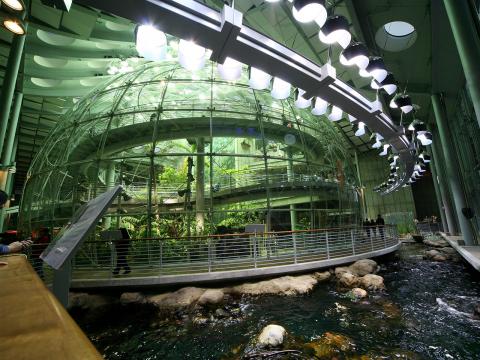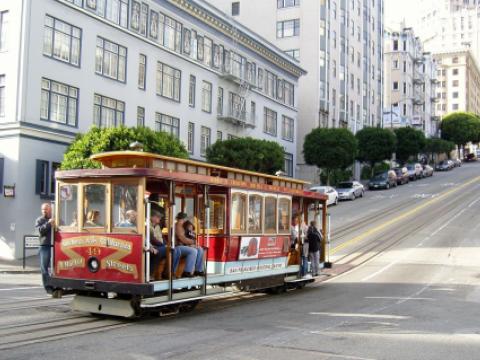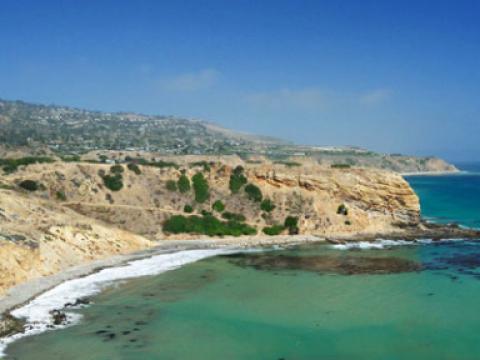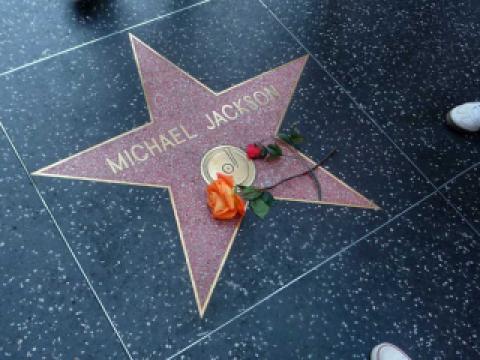Location
Alcatraz is perhaps the most legendary prison in the world. It is often referred to as private://The Rockprivate://. The small Alcatraz island on which the prison is located, has served as a lighthouse(1846->), a military fortification(1850->), a military prison(1861->), and a Federal Bureau of Prisons federal prison from 1934 until 1963. Today, the island is a historic site operated by the National Park Service as part of the Golden Gate National Recreation Area and is open to tours.
The Alcatraz island became federal prison in August 1934. It was in use for 29 years and held such notable criminals as Al Capone, Robert Franklin Stroud (the Birdman of Alcatraz), George private://Machine Gunprivate:// Kelly, James private://Whiteyprivate:// Bulger, Bumpy Johnson, Rafael Cancel Miranda, member of the Puerto Rican Nationalist Party who attacked the United States Capitol building in 1954., Mickey Cohen, Arthur R. private://Docprivate:// Barker and Alvin Karpis (who served more time at Alcatraz than any other inmate). It also provided housing for the Bureau of Prison staff and their families.
The majority of the prisoners at Alcatraz had been sent there after causing problems at other prisons.
ESCAPES
During its 29 years of operation, the penitentiary claimed no prisoners had ever successfully escaped. Thirty six prisoners were involved in 14 attempts, two men trying twice; 23 were caught, six were shot and killed during their escape, and three were lost at sea and never found.[24] The most violent occurred on May 2, 1946 when a failed escape attempt by six prisoners led to the so-called Battle of Alcatraz.
On June 11, 1962, Frank Morris, John Anglin and Clarence Anglin successfully carried out one of the most intricate escapes ever devised. Behind the prisoners' cells in Cell Block B (where the escapees were interned) was an unguarded 3-foot (0.91 m) wide utility corridor. The prisoners chiseled away the moisture-damaged concrete from around an air vent leading to this corridor, using tools such as a metal spoon soldered with silver from a dime and an electric drill improvised from a stolen vacuum cleaner motor. The noise was disguised by accordions played during music hour, and their progress was concealed by false walls which, in the dark recesses of the cells, fooled the guards.
The escape route then led up through a fan vent; the fan and motor had been removed and replaced with a steel grille, leaving a shaft large enough for a prisoner to climb through. Stealing a carborundum cord from the prison workshop, the prisoners had removed the rivets from the grille and substituted dummy rivets made of soap. The escapees also constructed an inflatable raft from several stolen raincoats for the trip to the mainland. Leaving papier-mâché dummies in their cells affixed with stolen human hair from the barbershop, they escaped. The prisoners are estimated to have entered San Francisco Bay at 10 p.m.
The official investigation by the FBI was aided by another prisoner, Allen West, who also was part of the escapees' group but was left behind (West's false wall kept slipping so he held it into place with cement, which set; when the Anglin brothers (John and Clarence) accelerated the schedule, West desperately chipped away at the wall, but by the time he did his companions were gone). Articles belonging to the prisoners (including plywood paddles and parts of the raincoat raft) were located on nearby Angel Island, and the official report on the escape says the prisoners drowned while trying to reach the mainland in the cold waters of the bay.
The MythBusters investigated the myth, concluding such an escape was plausible.
The attempt was the subject of the 1979 film Escape from Alcatraz with screenplay by Richard Tuggle; directed by Don Siegel and starring Clint Eastwood as Frank Morris, Jack Thibeau as Clarence Anglin, and Fred Ward as John Anglin.
Today Alcatraz is home to rare flowers and plants, marine wildlife, and thousands of roosting and nesting sea birds. Civil War-era buildings dotting the island give insight into the 19th century when the island served as both a harbor defense fort and a military prison. You can also see visible reminders of the American Indian Occupation that started in 1969 after the prison closed, highlighting an important milestone in the American Indian rights movement.
Visitors can reach the island by ferry ride from Pier 33, near Fisherman's Wharf in San Francisco. In 2008 the nation's first hybrid propulsion ferry started serving the island. The only way to tour Alcatraz is Alcatraz Cruises from San Francisco. Other bay cruise companies can take you by, but can't stop. Alcatraz tours are very popular and tickets sell out fast.
The price of a day tour for adults is $26 and $16 for children. Reserve around 4 hours for the tour.










